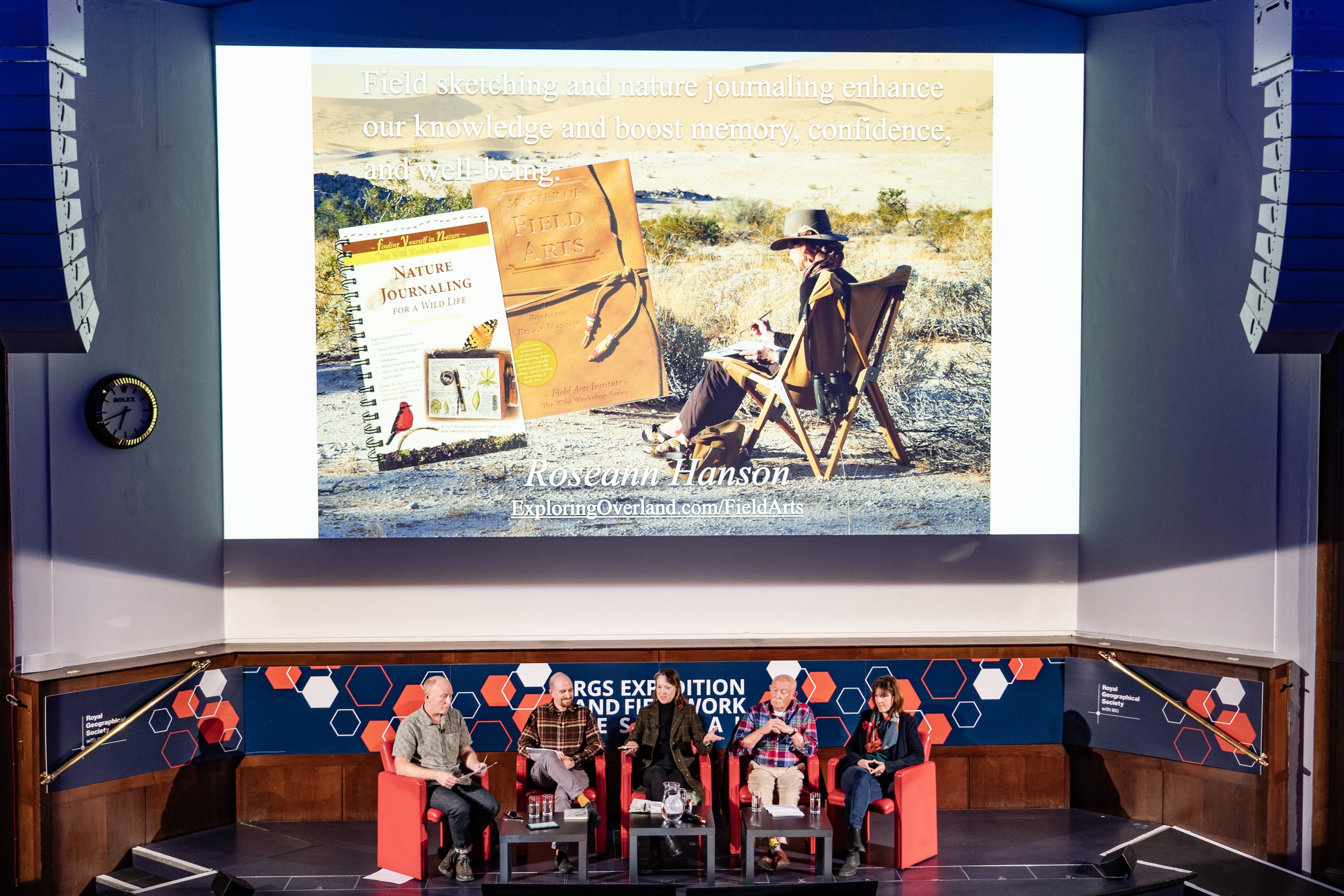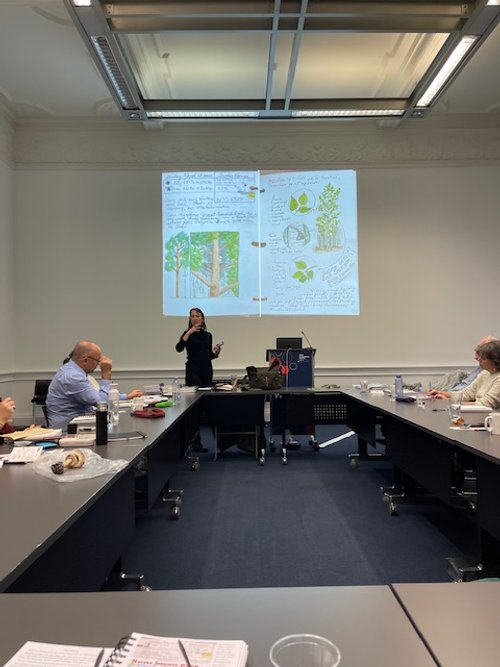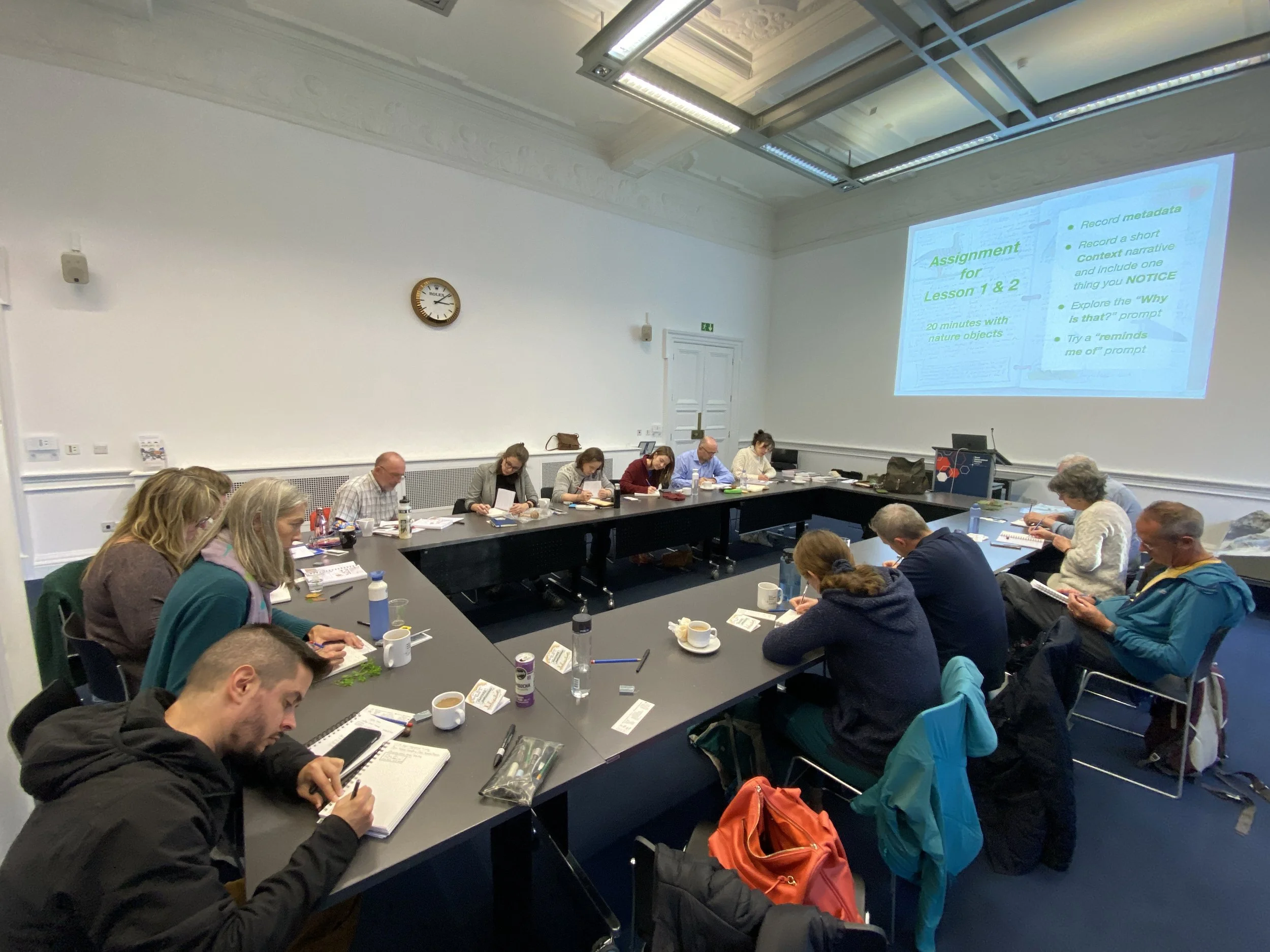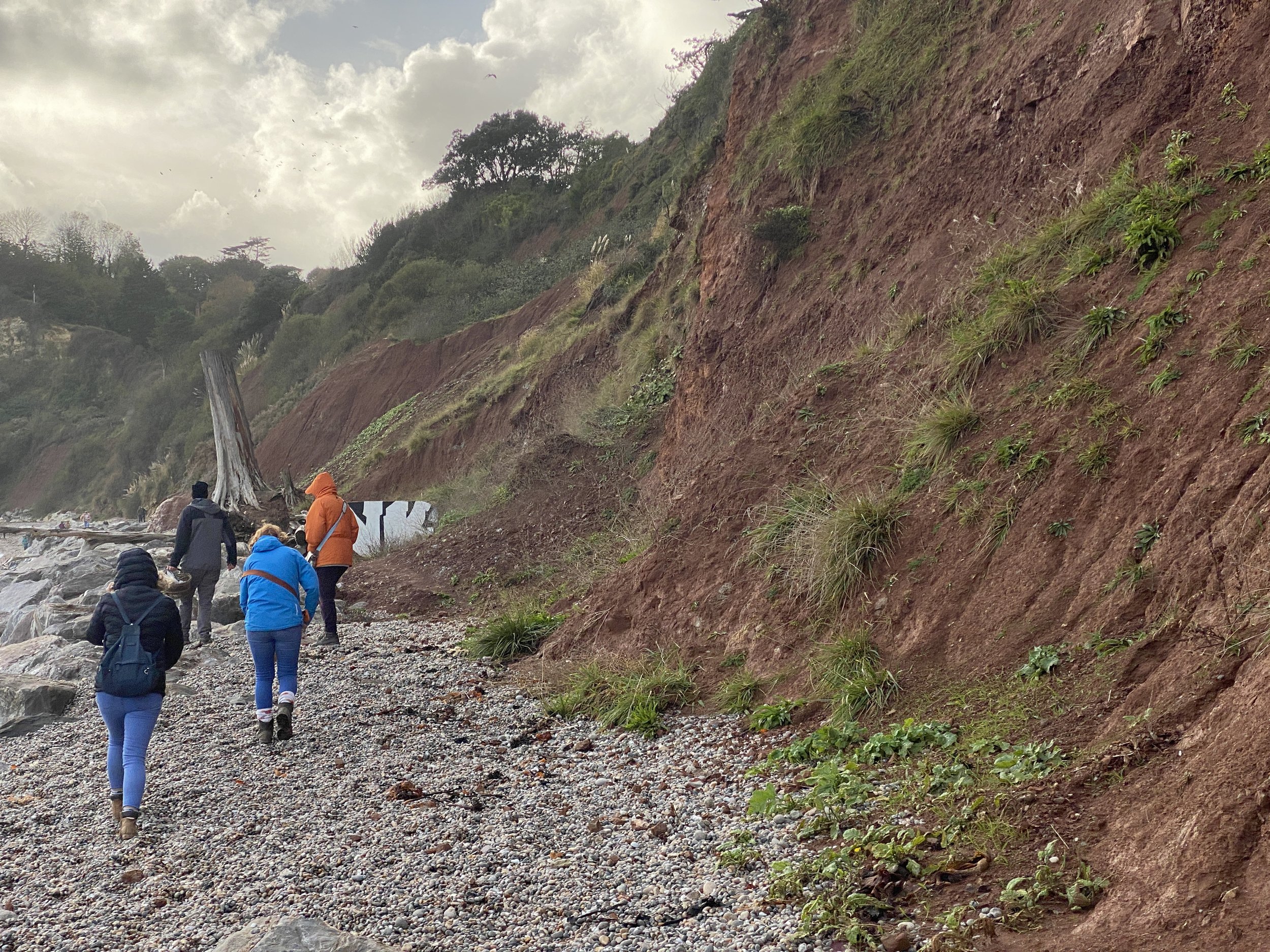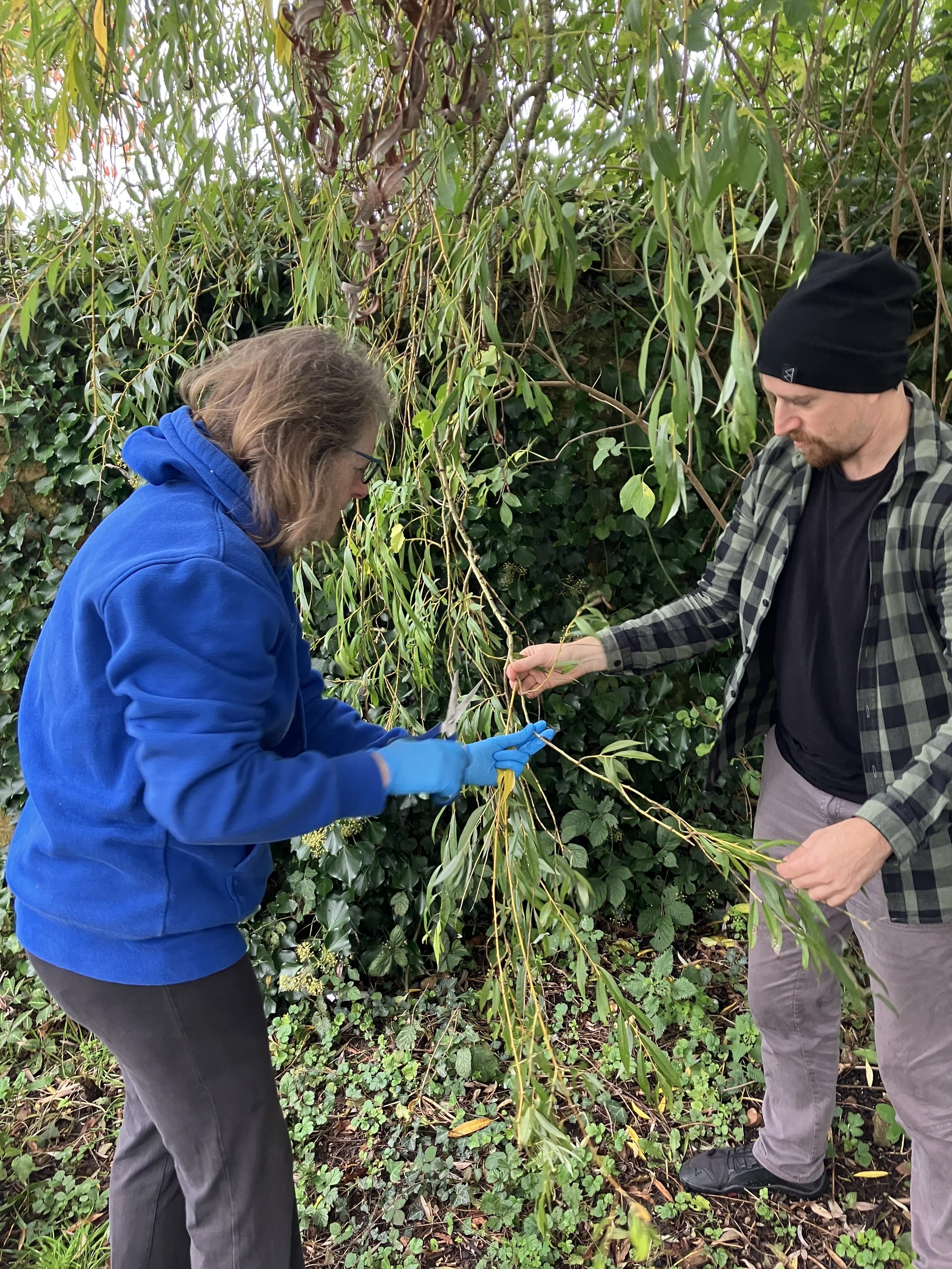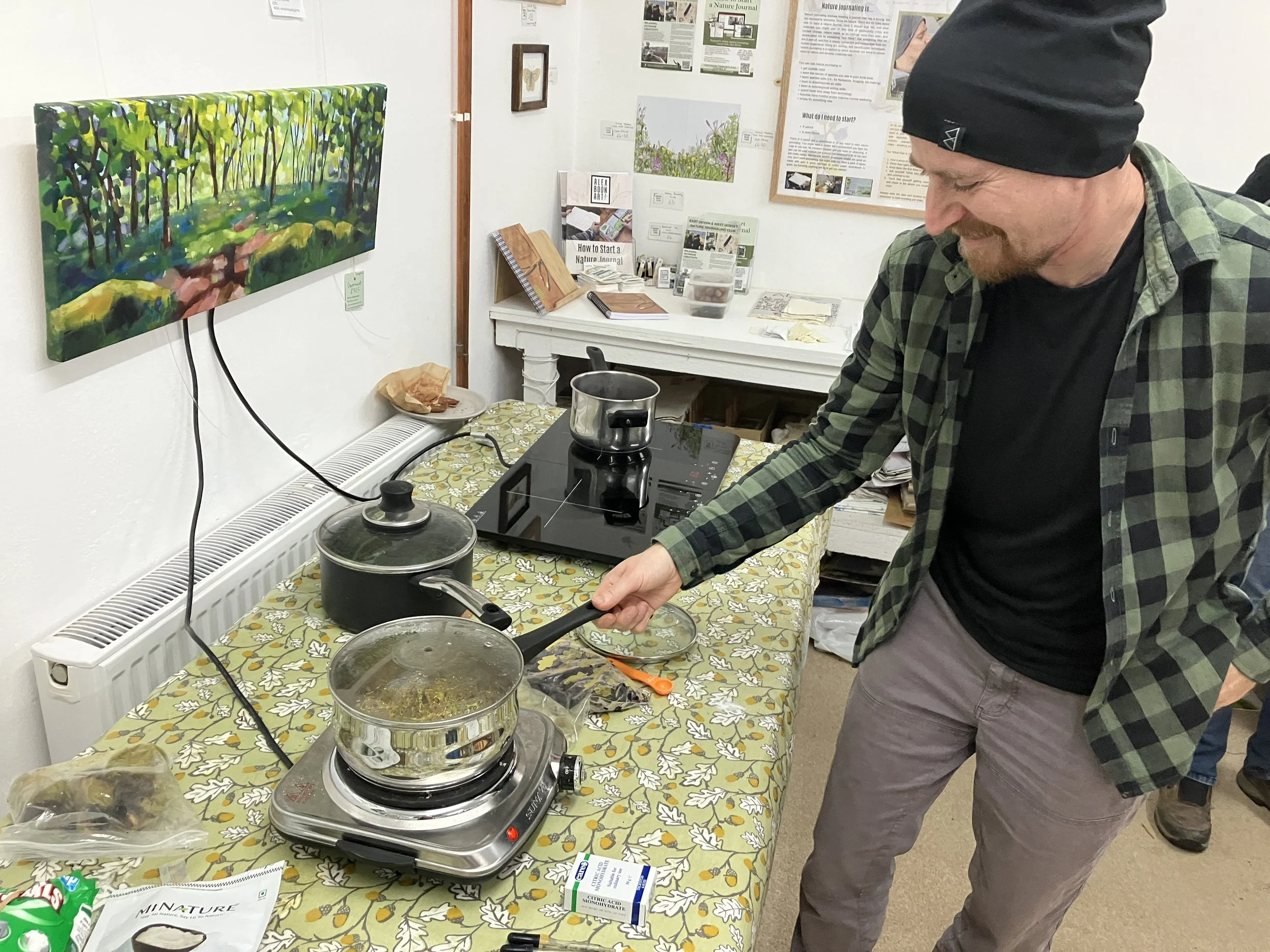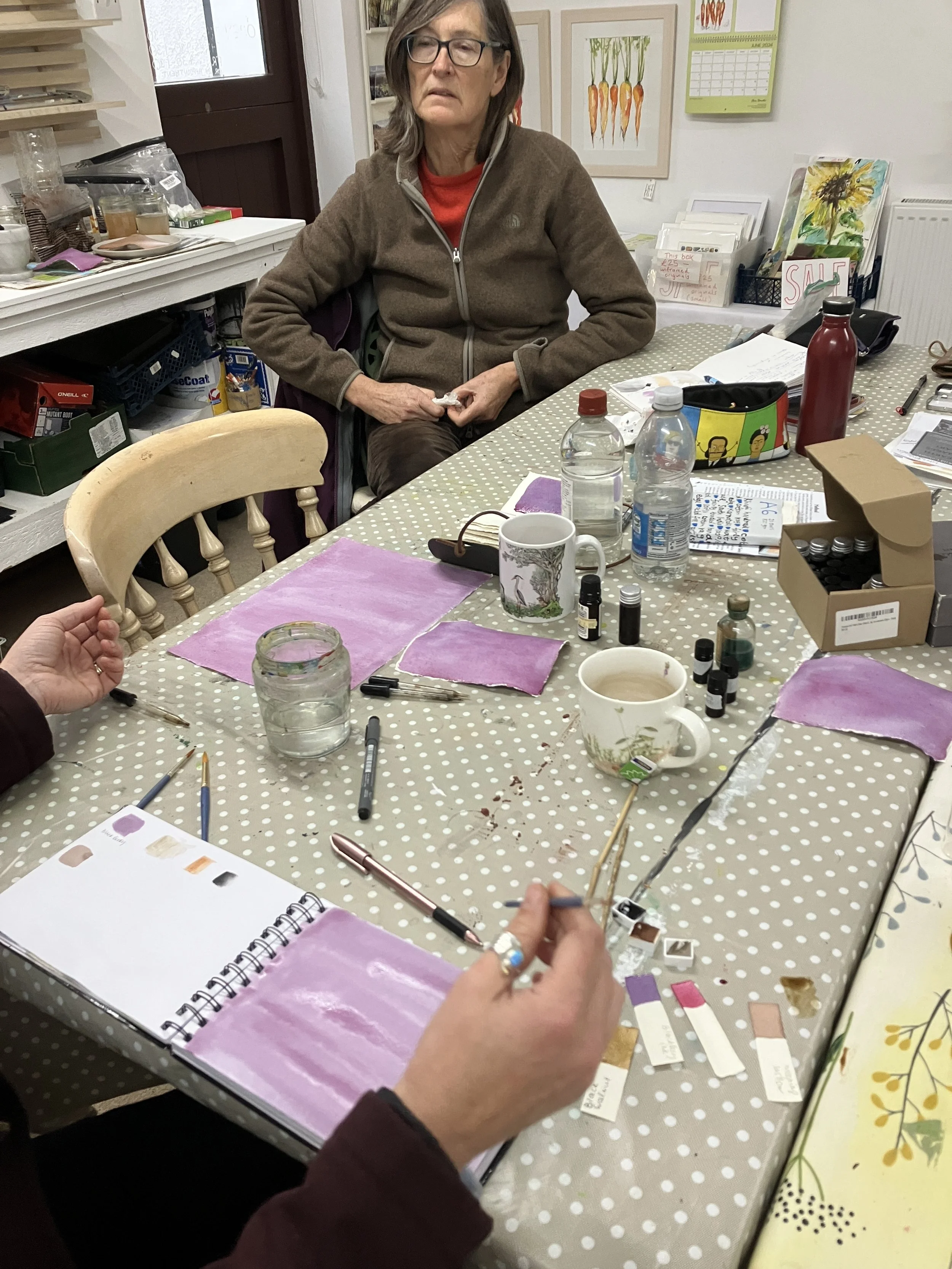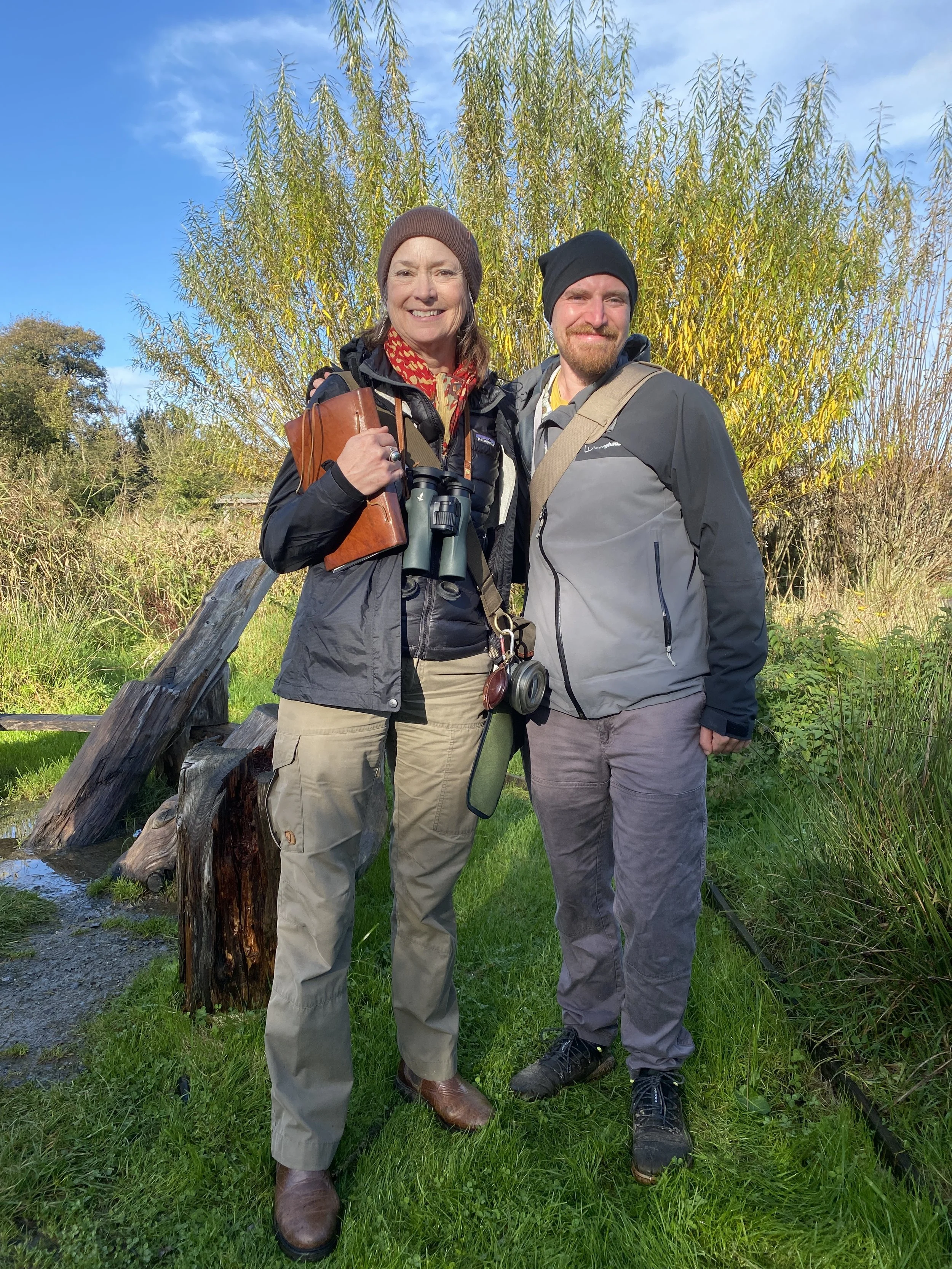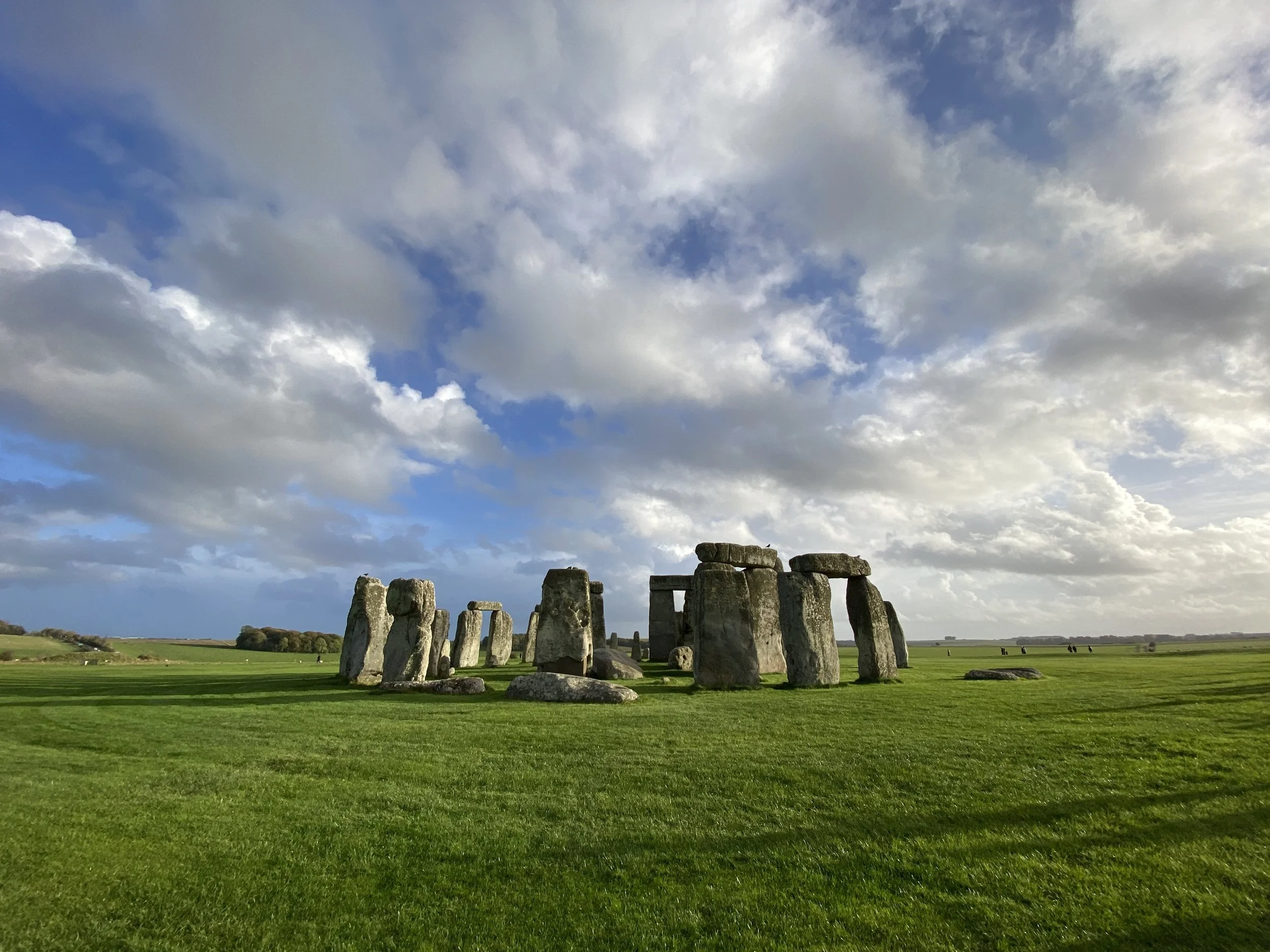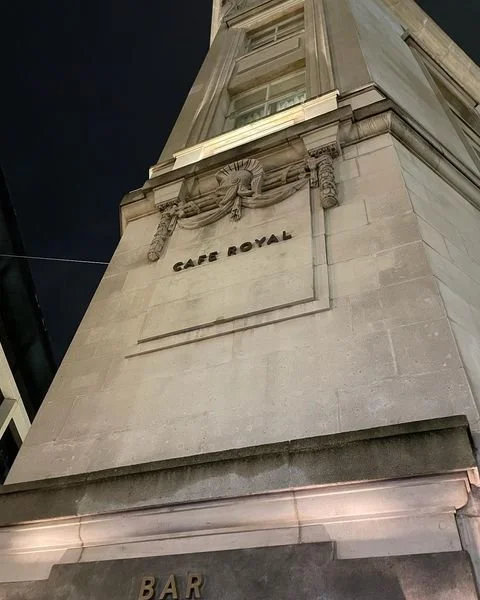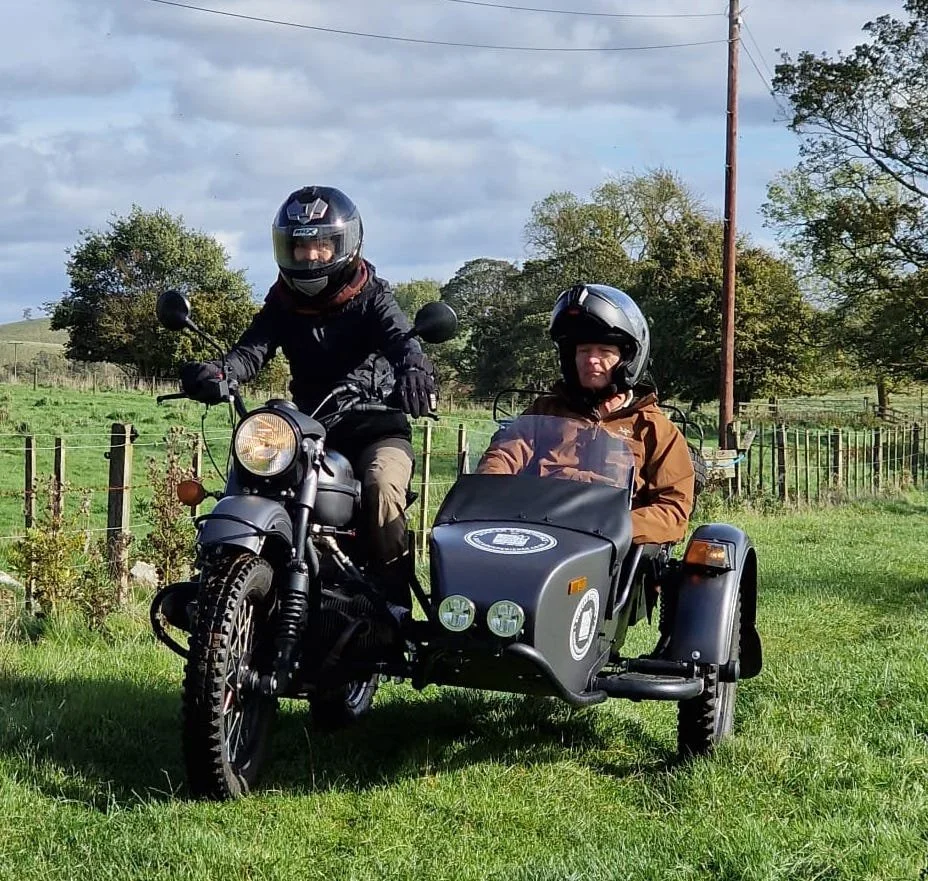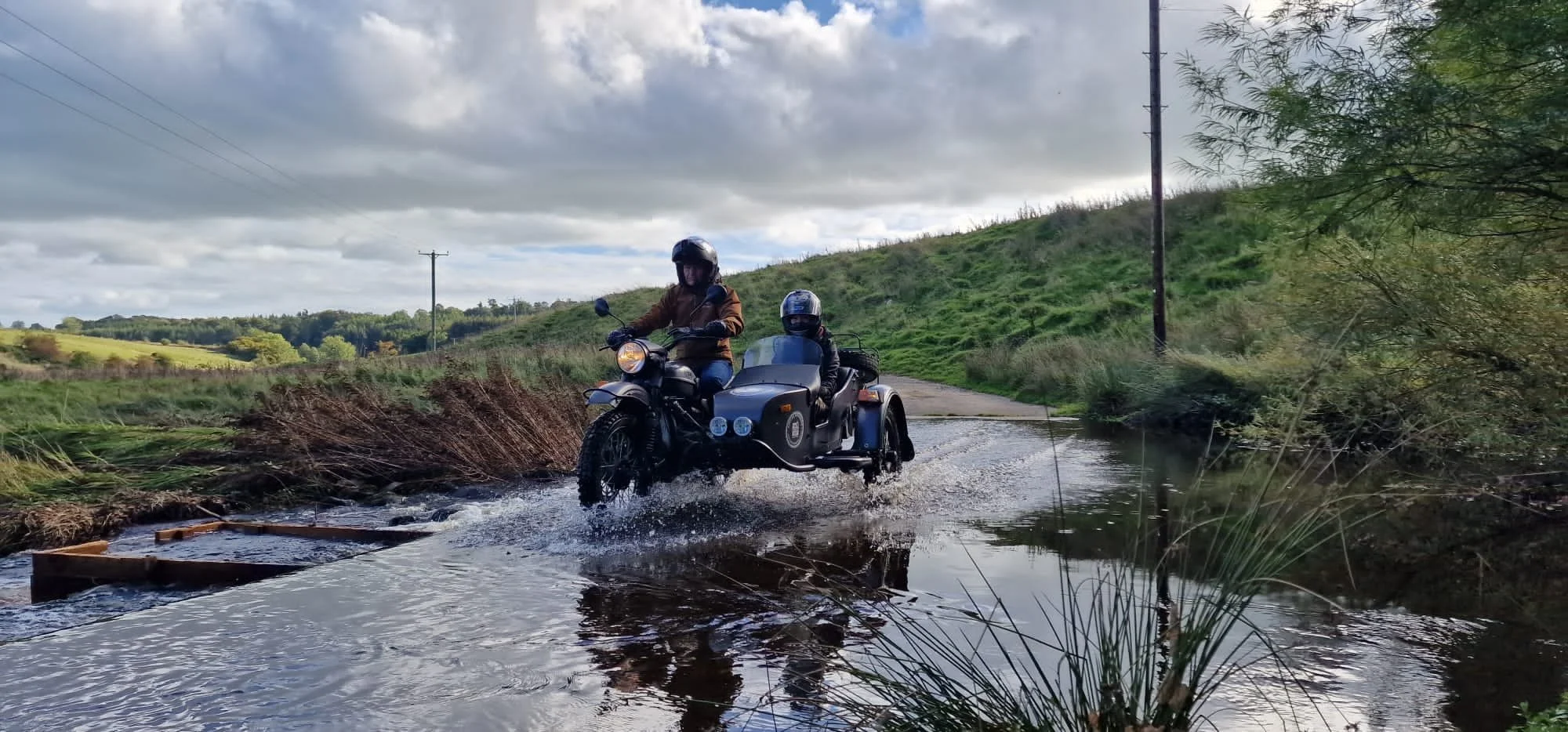We are recently returned from a month-long working tour of the UK—three field arts workshops, a morning exploring the Northumberland countryside by sidecar motorcycle, quality time with friends in Scotland and central and southern England, a visit to two of the most iconic human-built structures in Europe, and ending with a week in London where we presented at the Royal Geographical Society’s 47th annual Explore Symposium.
Every visit, adventure, and workshop was outstanding, but I’ll start with the latter events because they are freshest in my mind and also have some exciting future outcomes for us.
We have been attending Explore since 2017 and always enjoy the weekend of presentations, workshops, and networking for those of us who undertake field expeditions for science, exploration, and conservation. Jonathan and I have presented in our fields of overland vehicle travel, working with conservation organizations, funding projects, and art-science connections.
But this year was markedly different—the dynamic was considerably notched up in terms of diversity of the attendees and presenters, and in the energy that buzzed all around. In our first years at the event the attendees were primarily upper middle class white males, from college age on up. This year fully half if not more of the attendees and presenters were women, and there were many more people of non-white ancestry. And everyone I spoke with had an exciting research or exploration project, all with an aim to make a difference in the world through science, knowledge, and communication. It was incredibly uplifting.
For the first time I also taught a half-day workshop on field sketching and nature journaling as part of the pre-weekend event schedule, and I organized and co-hosted an Art of Exploration panel with esteemed fellow practitioners Alex Boon, Tony Foster, Ali Foxon, and Rob Fraser. We redefined what is exploration (from the broadly geographical and scientific, to the very personal and fractal, such as learning and recording everything you can about your own backyard), discussed the damage digital life can do to our health and the benefits of nature time, and in particular field sketching and journaling. Watch this space as we work on broadening our panel into a larger collective whose mission will be to expand interest in field sketching, journaling, and art in the service of geographical knowledge and human health.
Other highlights are a visit to coastal Scotland, then a quick stop on the North Sea at the mouth of the Tyne River, including a lovely run on the beach at dawn, which I tried to capture in my journal. Outside Hastings along the coast, I taught a free nature journaling mini workshop and met 8-year-old Lily, the most wonderful young explorer, naturalist, and nature journaler. That was a huge highlight.
West to Devon, I joined Alex Boon in co-teaching a Wild Colours workshop at his Nature Journaling Centre at Umborne Bridge Studio, Colyton. We cooked up wild plant inks (weeping willow, horsetail, walnut, blackberry), foraged for red ochre and greensand at Seaton beach, and tested all the colours with different additives. It was a fun, full day with great people, and now I'm fully obsessed with making inks from plants, thanks to Alex. I had done a little, but after seeing his journals with how he uses them, I am definitely doing more!
A bonus was that one of our attendees brought samples of North Devon's famous Bideford black pigment—it's a form of coal, and has been used as a colorant for paint, tires, boats, rubber tarps, and even mascara!
Other fun highlights included visits to Stonehenge and Salisbury Cathedral. Within 20 minutes of each other geographically and thousands of years temporally, these are two of the world’s most moving examples of human capacity to imagine and engineer symbolic works. What struck me particularly is that they are actually separated by a relatively short span of years (Stonehenge was built in the late Neolithic period, about 2500 BC, and Salisbury Cathedral was built between 1220 to 1320).
We also had drinks at the famous Cafe Royal, once the haunt of the Zerzura Club, a collection deep desert experts who wanted to find the lost city of Zerzura. Now renovated and no longer a restaurant, but a lovely little bar still providing the perfect spot for some North Africa expedition planning with friend Graham Jackson.
And finally we had a blast bombing around the Northumberland countryside on a Ural sidecar motorcycle rig courtesy Matt and Reece, the Sidecar Guys at their Sidecar Experience Center. Urals are a blast to drive, definitely nothing refined about it (my arms ached for several days from wrestling the rig in the muddy ruts), and a bit crazy when going over 30 mph on tarmac, but we are hooked now!


